TikTok for Shopify: Combined Listings
07/01/2025
Summary
What is the purpose and benefit of using Combined Listings on TikTok Shop?
- Combined Listings group related products (different PIDs) to create a seamless shopping experience, improving discoverability, increasing GMV, and simplifying merchandising for sellers with large or varied inventories.
- This feature helps shoppers easily browse related variations (e.g., sizes, colors), keeping them engaged and encouraging more purchases within a unified display.
How can sellers create and manage Combined Listings, and what are the key requirements or restrictions?
- Sellers use the TikTok for Shopify app under Shop Management > Manage Products, accessing the Combined Listings dashboard to accept system-suggested combinations or batch create listings; only select sellers currently have access.
- Products must be in the same category, cannot be gifts, virtual bundles, or auction items, and must comply with affiliate commission rules; sellers can edit or deactivate listings but cannot create net-new combinations beyond system suggestions.
What are best practices and tips for sellers to maximize the effectiveness of Combined Listings?
- Focus on true product variations like different sizes or colors of the same item to create a seamless feel for shoppers and maintain relevance.
- Monitor sales and engagement metrics post-implementation to optimize listing strategies and ensure the combined listings positively impact performance.
How do Combined Listings differ from traditional product variations or virtual bundles on TikTok Shop?
- Unlike traditional variations that share reviews and sales under one product, Combined Listings link separate product IDs with independent reviews and sales for a unified browsing experience.
- Combined Listings differ from virtual bundles, which create a new single product ID by bundling multiple products; Combined Listings simply connect existing related products without merging them.
What impact do Combined Listings have on existing product listings and shopper experience?
- Individual product listings remain unchanged but gain a special module on their product detail pages allowing shoppers to easily switch between related products.
- This enhances the shopper journey by increasing visibility of related products without altering the original listings or their sales data.
Combined Listings
Seamlessly connect related products to give your customers a smooth, integrated shopping experience.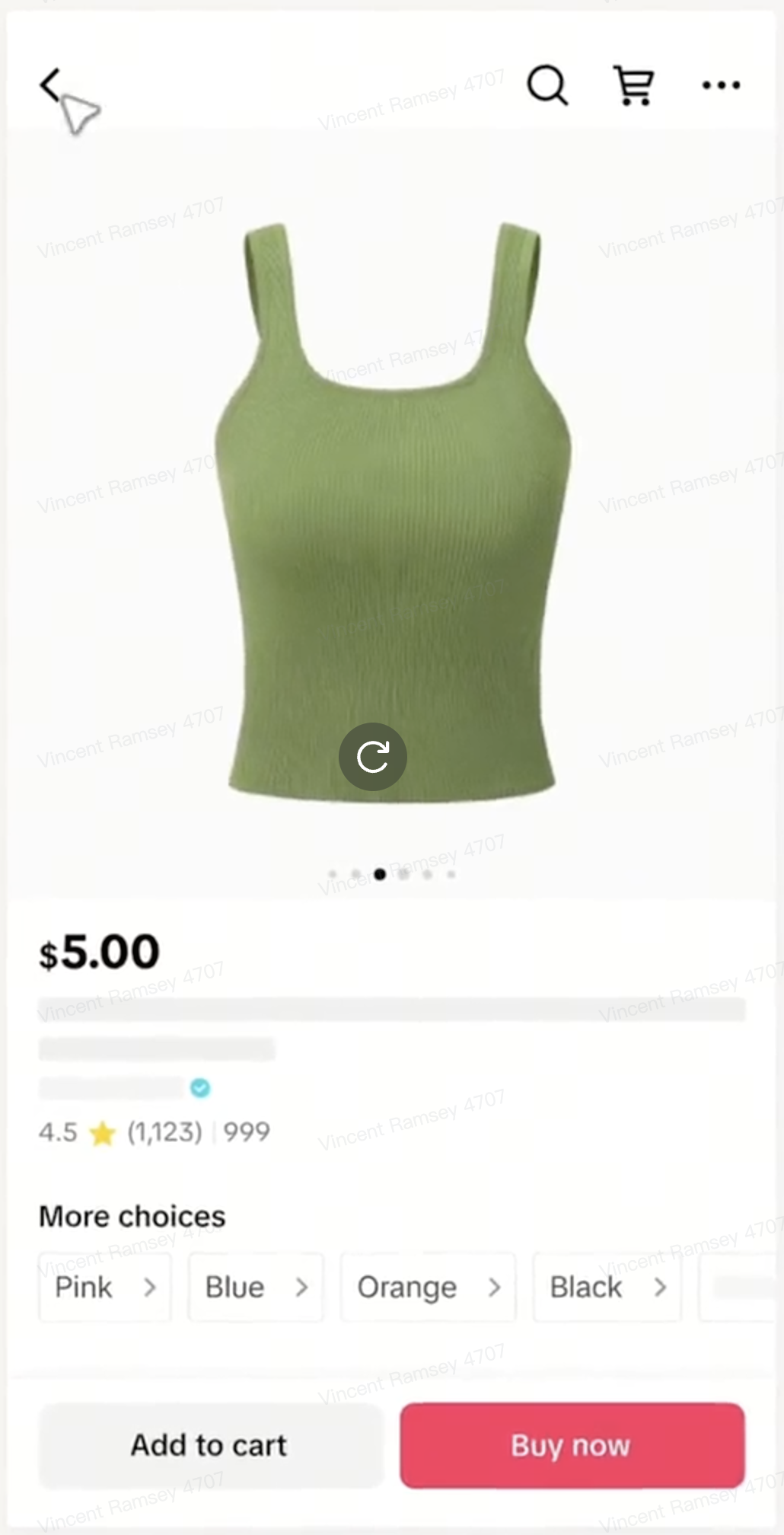
Benefits:
- Improve Discoverability: Help shoppers easily find related products, increasing exposure for your entire catalog.
- Enhanced Shopping Experience: Create a unified product display, making it effortless for shoppers to browse different (but similar) products
- Increase GMV: Keep shoppers engaged within your product catalog, encouraging them to explore more of your offerings and complete their purchase.
- Simplify Merchandising: Organize your products more effectively, especially if you manage a large inventory with many variations.

How It Works:
Combined Listings allows you to group related products (or PIDs) together, creating a connected shopping journey for your customers.How it Works (Currently available for select sellers)Here’s how you’ll create and manage Combined Listings:
In TikTok for Shopify app:
- Navigate to Shop Management > Manage Products and look for the Combined Listings button at the top-right to create or manage your Combined Listings.
- A red dot indicator will appear when system-suggested combinations are available for your products.
- When syncing products from Shopify or creating new products, automatic pop-up notifications will appear if your products are eligible for Combined Listings.
- You can close the notification, learn more through the Academy link, or view suggestions immediately.
- To create a Combined Listing, click the Combined Listings button to access the dashboard with two tabs: "Suggested Combinations" for creation and "Combined Listings" for existing listings.
- In the "Suggested Combinations" tab, review system-recommended choices showing product details and option names for each combination.
- Select the suggested choices you want to combine so customers can browse related products easily.
- NOTE: The product variations cannot be gifts, virtual bundles, or auction items.
- Additionally, all listings must be in the same category.
- Choose "Batch Combine" to create multiple combinations simultaneously, or create combinations individually through the single creation flow.
- If a listing is part of an open collaboration, the system will prompt you to set a commission percentage to successfully create the Combined Listing. All products in a Combined Listing should meet either of the following affiliate rules:
- None of the products have any affiliate commission plan (including open, targeted, or TAP)
- All products have an open affiliate plan, but the commissions can be different
- Once all required information is entered, select Create at the bottom to create the Combined Listing. The Combined Listing will be successfully created and can be viewed under the Combined Listings tab for any required edits.
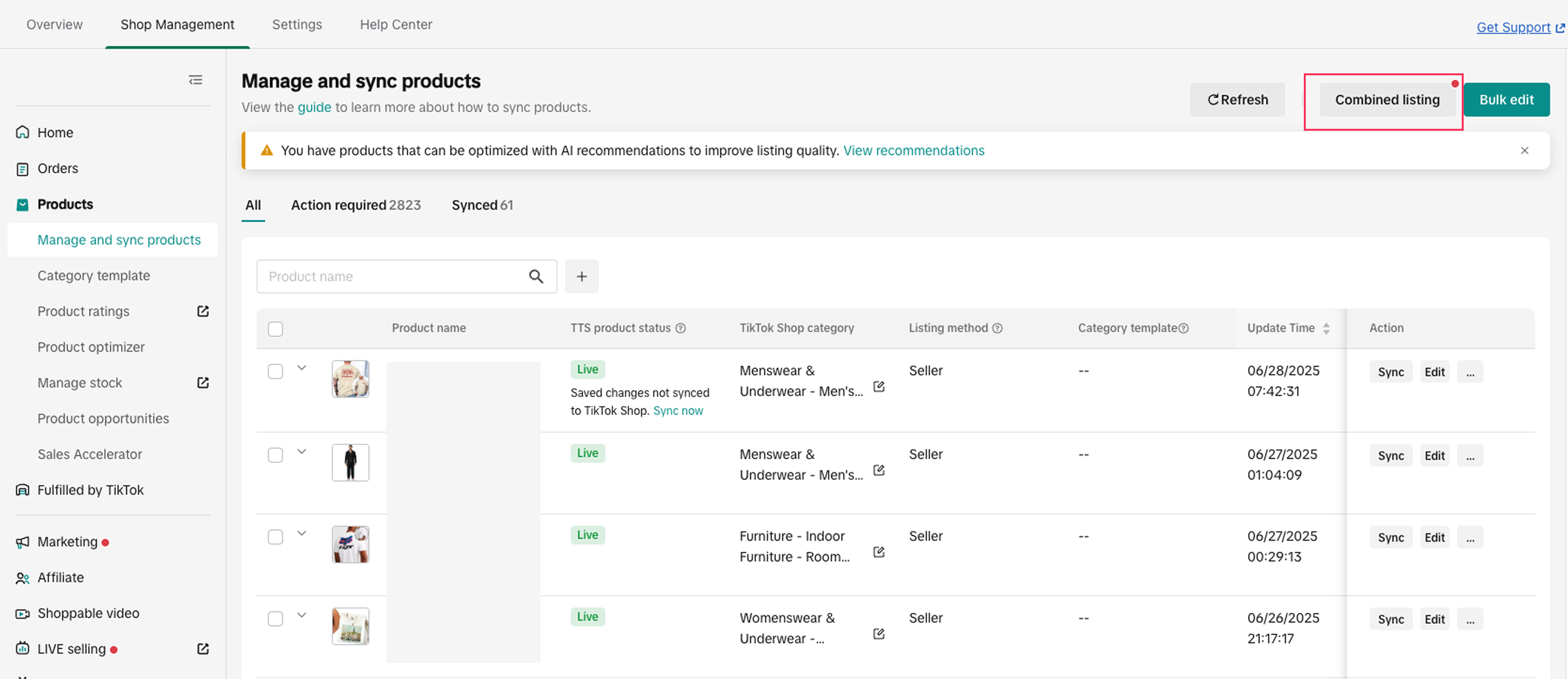 Managing Existing Combined Listings:
Managing Existing Combined Listings:- Access the "Combined Listings" tab to view all existing combinations.
- You can edit listings you created; AMS-created listings are view-only with grayed-out options.
- Click "Edit" on your listings to modify products, update option names, or change commission settings.
- Use "Deactivate" to temporarily hide listings from customers with a confirmation pop-up, or reactivate by editing and updating the status.
- NOTE: Listings automatically deactivate if all products become unavailable, with notifications explaining the reason.
 Tips:
Tips:- Choose wisely: The product variations can not be gifts, virtual bundles, or auction items. Additionally, all listings must be in the same category.
- Focus on True Variations: The most impactful combined listings are typically for different variations of the same product, like different sizes (e.g., 14oz, 20oz, 30oz water bottles) or colors. This creates the most "seamless" feel for shoppers.
- Keep it Relevant: Combined Listings are designed for closely related items. For example, connecting a water bottle with its various size options is a perfect fit.
- Monitor Your Performance: Keep an eye on your sales and engagement metrics after interlinking products. This will help you understand what's working well and where you might need to adjust your Combined Listing strategies.
 FAQ:
FAQ:- Is the the same thing as Virtual Bundles? No, these are different. Combined Listings seamlessly connects different, existing product IDs (PIDs) that are related variations or closely tied items, creating a unified shopping experience where shoppers can effortlessly jump between them. This differs from Virtual Bundles, which bundle multiple existing products into a single, new product ID for purchase.
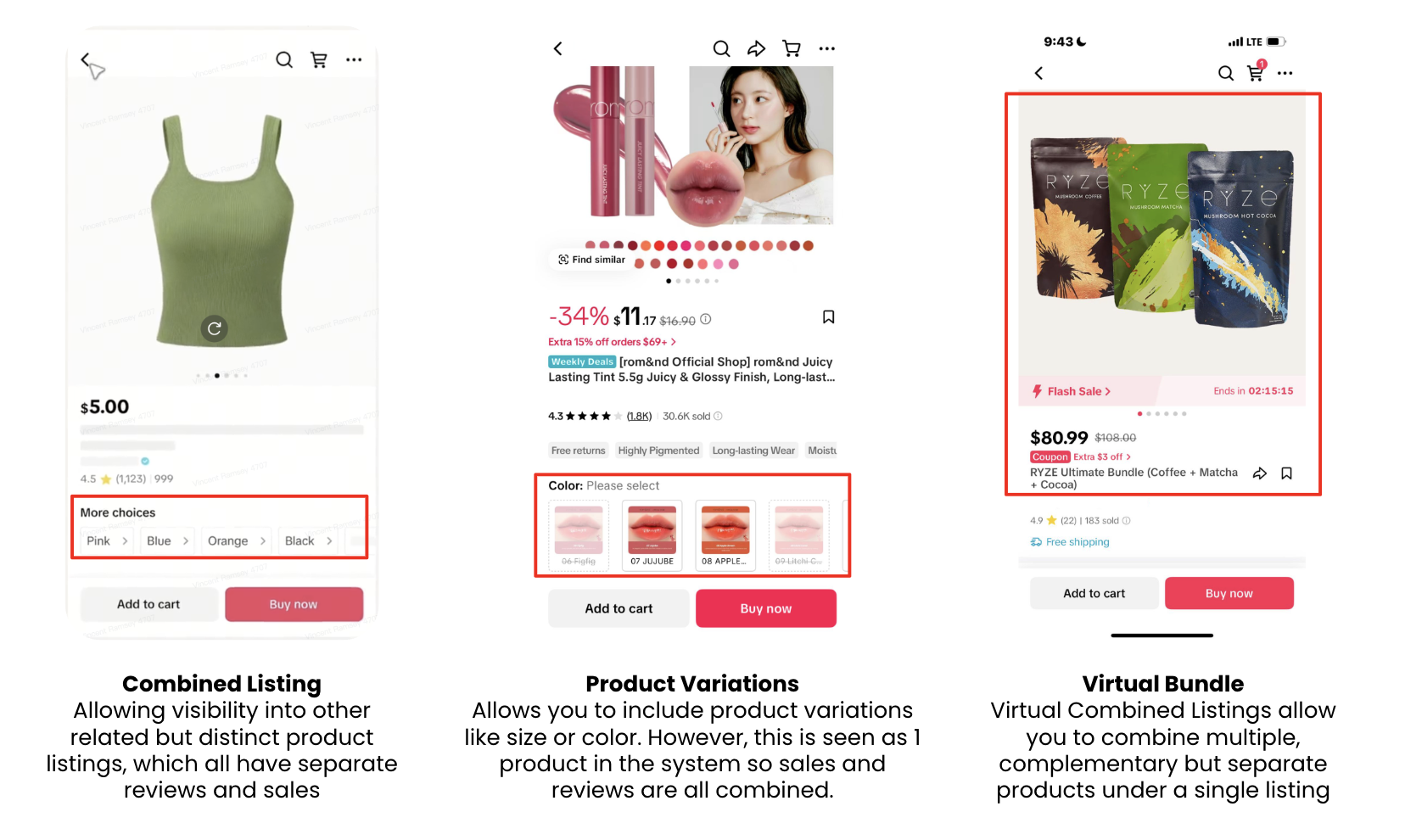
- Who is this product for? This product is primarily for sellers, who want to combine different product IDs (PIDs) to be displayed together, allowing shoppers to easily navigate between related products as if they were a single item.
- Why can't I just create product variations within a single listing instead of doing a Combined Listing? While traditional product variations work for some scenarios, Combined Listings is specifically designed to seamlessly connect different PIDs (which might currently appear as separate listings) into a unified shopping experience for users. This is especially useful if you have a more complex product catalog or just want to replicate a "single product with multiple variations" feel across distinct PIDs.
- What kind of products should I include in Combined Listings? Ideal candidates for Combined Listings are different sizes, colors, or direct variations of the same core product. Think of items like a Stanley water bottle available in 14oz, 20oz, and 30oz sizes –- Combined Listings make it easy for shoppers to switch between these options.
- Will combining my listings affect my existing product listings? When products are a part of a Combined Listing, a special module will appear on their Product Details Pages (PDPs) that allows shoppers to jump between the related PIDs. The individual product listings themselves will still exist, but the shopper's journey will be enhanced by having visibility into the related products through Combined Listings.
- How will I know if my Combined Listings are performing well? We encourage you to observe changes in your business data, such as GMV and conversion rates, for products that have been combined.
- Can I start creating net-new Combined Listings myself? At this time, you'll only have the ability to accept and use Combined Listings that the system recommends.
- What if I want to remove products from a Combined Listing? You'll have the ability to edit and manage these packages in Seller Center.
You may also be interested in

List with a URL
Note: This feature is currently in beta to a limited set of pre-selected sellers. Introduction: Wh…

Made-to-Order (MTO)
Introduction: What is Made-to-Order (MTO)? Made-to-order is a new listing option available for eligi…

Applying for Category Permission
Introduction Some product categories on TikTok Shop are restricted and require sellers to apply for…
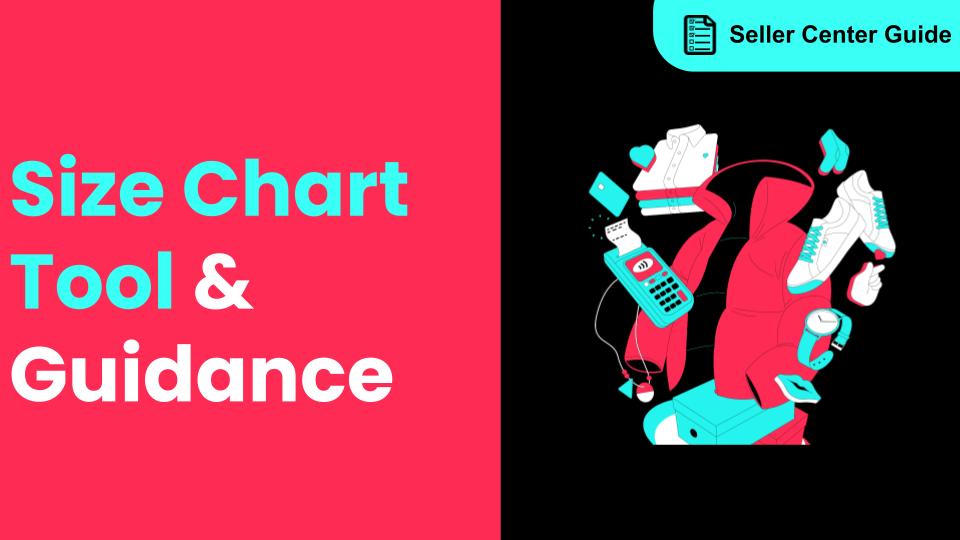
How to Use Size Chart Tool & Guidance
Introduction to our Size Chart Tool With the Size Chart tool, you can now update key sizing informat…

Edit products in your shop
Introduction to editing products in your shop Maintaining accurate and appealing product listings is…

Pre-Owned Products - Uploading Certificate of Authenticity
Pre-Owned Products - Uploading Certificate of Authenticity Products sold in the Pre-Owned category,…

Updated category names
Introducing updated category names As part of our ongoing commitment to improving TikTok Shop and en…

TikTok for Shopify: Promotions Sync
Overview: Shopify sellers can sync Promotions/Discounts on Shopify directly to TikTok Shop (TTS) wit…
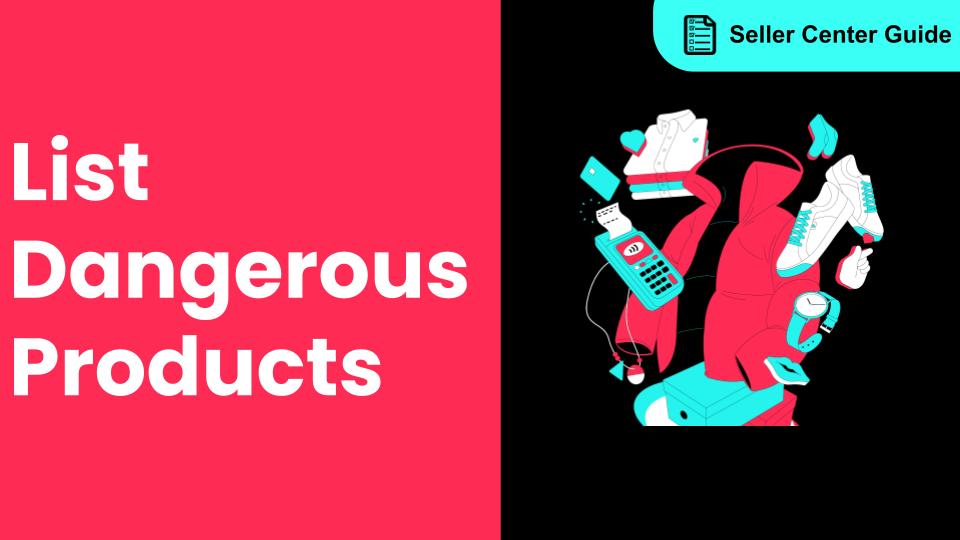
How to List Dangerous Goods
How do I list Dangerous Goods on my shop? We are launching an improved product listing experience to…

Product Ratings
Product Rating overview Product Rating in Seller Center is a seller's one-stop shop to learn what cu…